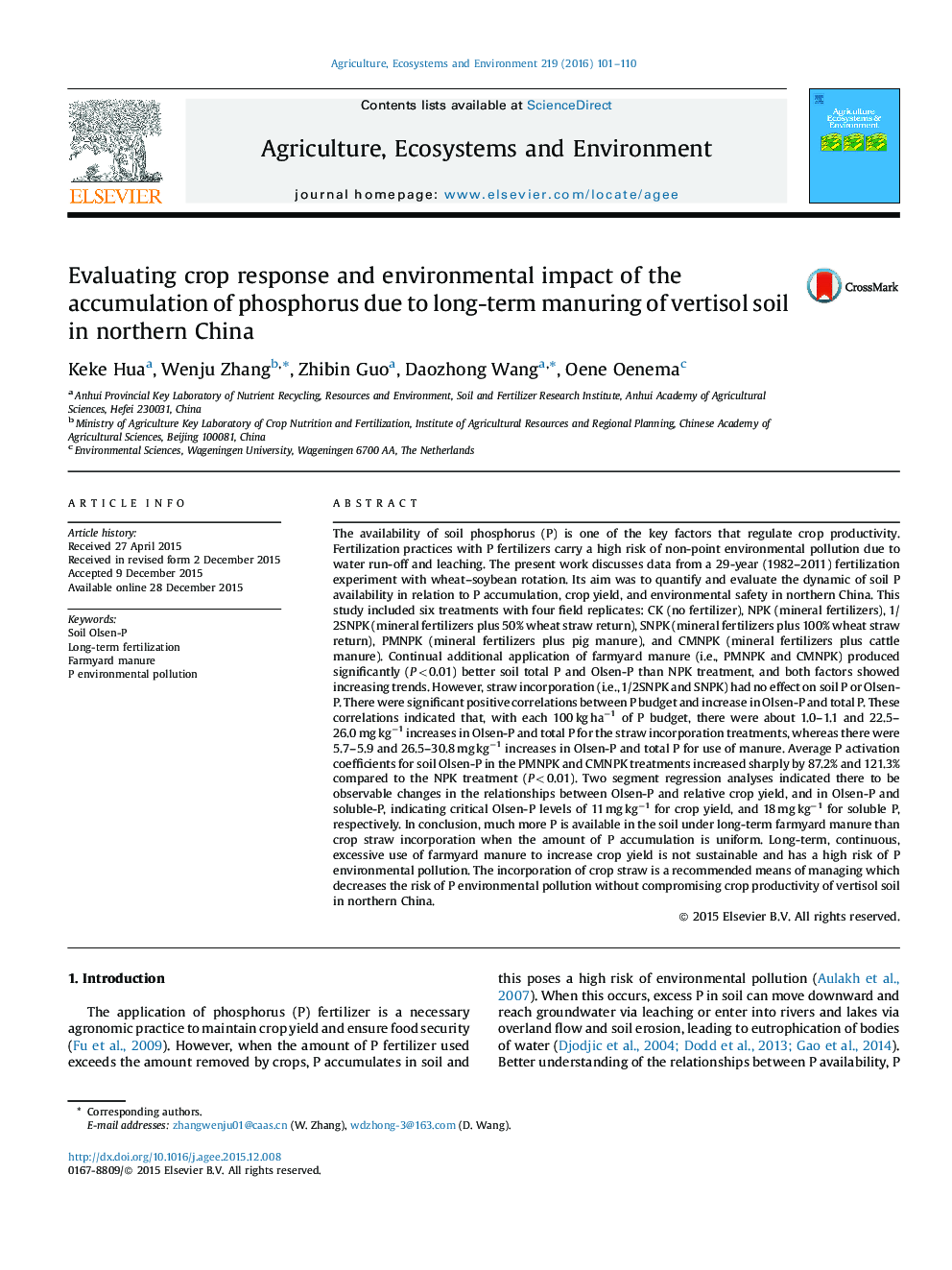| Article ID | Journal | Published Year | Pages | File Type |
|---|---|---|---|---|
| 8487520 | Agriculture, Ecosystems & Environment | 2016 | 10 Pages |
Abstract
The availability of soil phosphorus (P) is one of the key factors that regulate crop productivity. Fertilization practices with P fertilizers carry a high risk of non-point environmental pollution due to water run-off and leaching. The present work discusses data from a 29-year (1982-2011) fertilization experiment with wheat-soybean rotation. Its aim was to quantify and evaluate the dynamic of soil P availability in relation to P accumulation, crop yield, and environmental safety in northern China. This study included six treatments with four field replicates: CK (no fertilizer), NPK (mineral fertilizers), 1/2SNPK (mineral fertilizers plus 50% wheat straw return), SNPK (mineral fertilizers plus 100% wheat straw return), PMNPK (mineral fertilizers plus pig manure), and CMNPK (mineral fertilizers plus cattle manure). Continual additional application of farmyard manure (i.e., PMNPK and CMNPK) produced significantly (P < 0.01) better soil total P and Olsen-P than NPK treatment, and both factors showed increasing trends. However, straw incorporation (i.e., 1/2SNPK and SNPK) had no effect on soil P or Olsen-P. There were significant positive correlations between P budget and increase in Olsen-P and total P. These correlations indicated that, with each 100 kg haâ1 of P budget, there were about 1.0-1.1 and 22.5-26.0 mg kgâ1 increases in Olsen-P and total P for the straw incorporation treatments, whereas there were 5.7-5.9 and 26.5-30.8 mg kgâ1 increases in Olsen-P and total P for use of manure. Average P activation coefficients for soil Olsen-P in the PMNPK and CMNPK treatments increased sharply by 87.2% and 121.3% compared to the NPK treatment (P < 0.01). Two segment regression analyses indicated there to be observable changes in the relationships between Olsen-P and relative crop yield, and in Olsen-P and soluble-P, indicating critical Olsen-P levels of 11 mg kgâ1 for crop yield, and 18 mg kgâ1 for soluble P, respectively. In conclusion, much more P is available in the soil under long-term farmyard manure than crop straw incorporation when the amount of P accumulation is uniform. Long-term, continuous, excessive use of farmyard manure to increase crop yield is not sustainable and has a high risk of P environmental pollution. The incorporation of crop straw is a recommended means of managing which decreases the risk of P environmental pollution without compromising crop productivity of vertisol soil in northern China.
Related Topics
Life Sciences
Agricultural and Biological Sciences
Agronomy and Crop Science
Authors
Keke Hua, Wenju Zhang, Zhibin Guo, Daozhong Wang, Oene Oenema,
